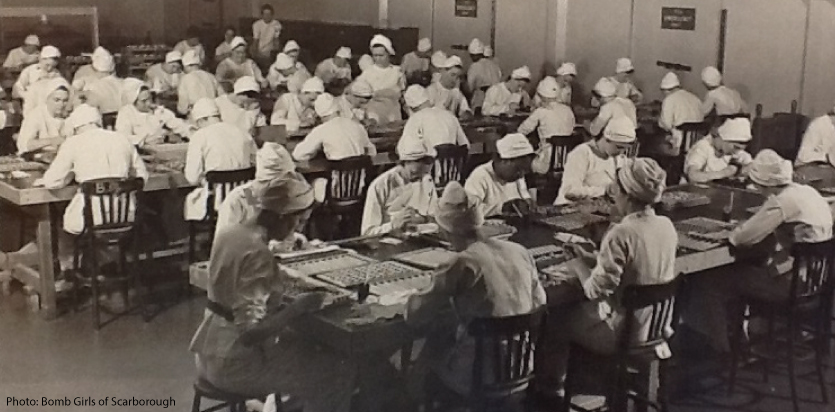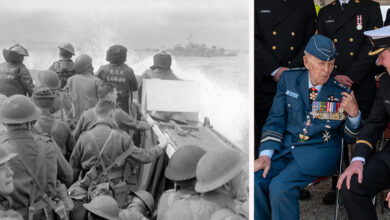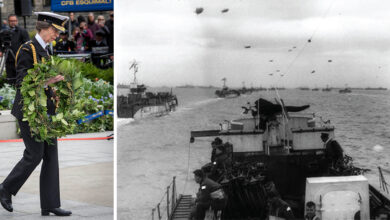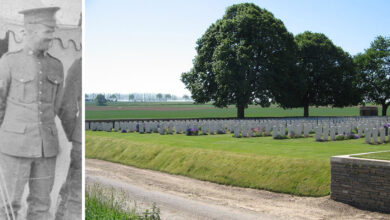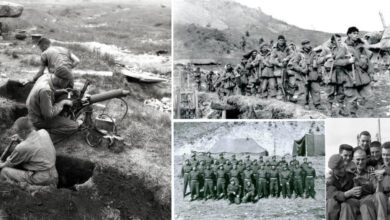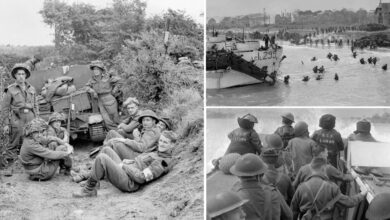History
Canadian Bomb Girls effort come to light in new documentary
During the Second World War, more than 21,000 people, mostly women, worked with dangerous explosives in Scarborough, ON for four years as part of the Canadian war effort.
Sadly, the stories of these women who risked their lives every day were almost lost to history if it weren’t for Barbara Dickson’s book Bomb Girls: Trading Aprons for Ammo.
Now, these stories will be showcased to a wider audience through a Bell Media documentary entitled Bomb Girls: A Documentary.
Born and raised in Scarborough, ON, Dickson first became interested in the story of the Bomb Girls when she discovered that the city she had resided in for years had a secret network of four-kilometre tunnels underground. Upon further research, she learned that the tunnels belong to the top-secret World War Two munitions factory GECO.
She was then introduced to a Bomb Girl.
“I asked her where I could buy the book and she said there is no book. In fact, you’re the first person to ask me about my war work in 70 years,” recalled Dickson.
She came to realize that GECO and the women who worked there were “Canada’s best-kept secret.”
Dickson, who had been diagnosed with multiple sclerosis in 1992, had rediscovered her love for writing. She decided to undertake the work of writing a book about the Canadian Bomb Girls.
“It’s very important that people know about these just incredible ladies and you know they’re all passing away. If we don’t capture their stories then we’ll lose that oral history,” commented Dickson.
Dickson started doing informal polls at grocery stores to see how many people knew about the tunnels and if they knew that 21,000 people had worked in the city, risking their lives, to fill munitions. She was often met with blank looks.
Because the government had destroyed all documentation related to GECO, there were no employee records for Dickson to use. And so, she had to patiently wait for the word to get around through bomb girls she had met and the internet. Slowly but surely the responses started coming in, and Dickson began the interview process.
When interviewing the ladies, many of whom have now passed, Dickson discovered that they all had different reasons for doing the work, some needed the money, some wanted to do their bit, but they all had one thing in common.
“What struck me was that they didn’t appreciate the danger they were in by handling these high explosives and the risk of explosion. They didn’t truly appreciate the danger of the work they are doing,” said Dickson.
Dickson says many of them didn’t even realize the significance of what they had done, what they had accomplished.
After ten years of working on Bomb Girls, the book was finally published in 2015.
Dickson was approached by Bell Media after an executive producer had read the book.
“He felt that it was a story that hadn’t been told yet, a Canadian story. So, he was very eager to tell that story,” recalled Dickson.
The documentary interviews Dickson, five Bomb Girls, and uses war-time footage of the Scarborough plant’s construction, its secretive tunnel system and more.
“I’m very excited about it. I’m thrilled that Bell Media has undertaken this endeavour to have this documentary made. It’s long overdue. It’s something that should have been done a long time ago. I’m glad its come to fruition and its out there now,” said Dickson.
During filming, Dickson and the Bomb Girls were able to visit the tunnels and what remained of the munitions plant.
More than anything, Dickson is glad that these Bomb Girls, her “movie stars,” are finally getting their moment in the spotlight.
“They’re so humble and so unassuming. They don’t want the recognition and yet you can see them beaming when you talk to them about their work. I just love my bomb girls,” commented Dickson.
Bomb Girls: A Documentary is now available on Bell Fibe TV1 Channels 1 and 1001.


